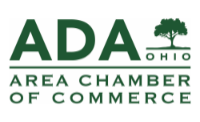With President Biden’s State of the Union Address quickly approaching, ONU students analyze the history of these addresses and discuss what Americans can expect from Biden on February 7.
In a new un-CAPP it! podcast, Ohio Northern students Kennedy Aikey, Caleb Clayton and Hailey Trimpey examine the State of the Union Address. They explain the origin of the State of the Union Address and provide historical examples of well-regarded addresses. They conclude by providing some insight on what we can anticipate President Biden will discuss during his own address on February 7, 2023.
State of the Union Addresses are a key communication tool for the president. They typically occur at the beginning of the calendar year and act as an update to Congress on the overall condition of the nation. They also provide an opportunity for the president to boast about their accomplishments. The student authors explain that “it has evolved into an opportunity for a president to tout their accomplishments and set an agenda for the upcoming year.” Throughout history, the format of State of the Union Addresses has changed; they began with George Washington delivering the first ever address in person, but soon transitioned into letter format, then back to in-person addresses with Woodrow Wilson. This is the format that is still used today.
Several historic State of the Union Addresses were given by our war time presidents. Abraham Lincoln’s address in 1862 was his way of communicating to the public his intentions with the recently issued Emancipation Proclamation. While the topic he addressed was an integral part of the nation’s history, it was “his eloquence and impeccable writing”: that led Lincoln’s State of the Union address to “set the bar for all future addresses.” Franklin D. Roosevelt’s address in 1941 was centered around four main freedoms he wanted to achieve for individuals around the world and acted as a motivator for the weary during World War II. George W. Bush’s address months after the September 11th attacks outlined an “axis of evil” and prepared the nation for war.
With President Biden delivering his address on February 7, the student authors highlight some key points to listen for. The first of these topics is the state of the economy. American families continually face the challenge of inflation, but we can anticipate Biden will provide reassurance that he is putting forth efforts to lower these rates. Gun violence in America is another topic we might see in Biden’s address. Gun control is an important issue to the Democratic Party, especially in the wake of multiple school shootings. It is highly anticipated that President Biden will address the Russia-Ukraine Conflict. The student authors write, “He will want to raise awareness again about the situation and gain the American people's bi-partisan support.” Lastly, it is likely Biden will address the deep polarization that has affected the country and urge Americans to work together toward a common end. There are many events that the President could address on February 7, but these are a few to keep an eye out for.
The Institute for Civics and Public Policy (ICAPP) at Ohio Northern University is a non-partisan, education-based community of scholars dedicated to conducting high-quality research to support civic literacy and an informed understanding of public policies with a focus on those issues affecting citizens in the Industrial Midwest.


